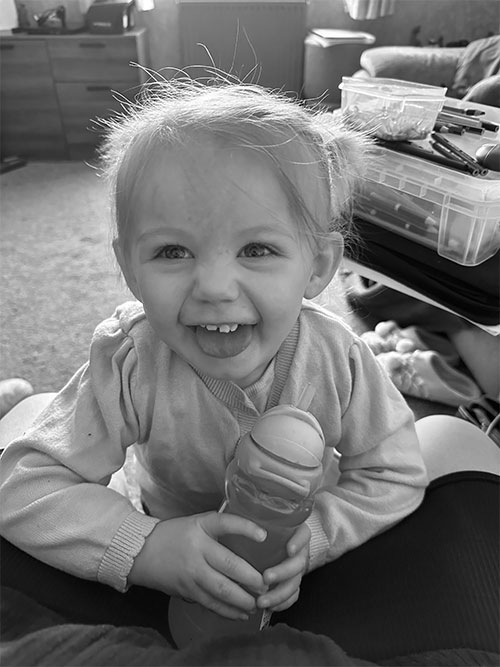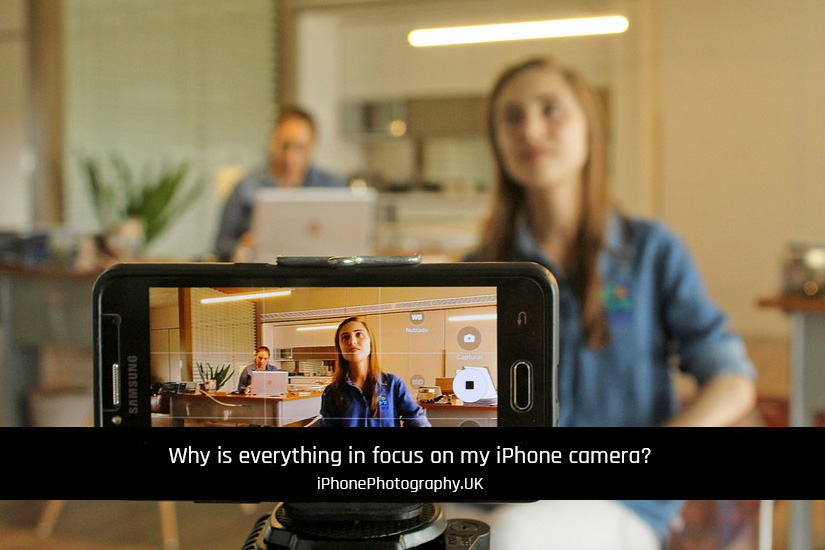So, why is the entire scene in focus on my iPhone?
If you’ve got even a basic understanding of aperture, and it’s effect on depth of field, you’ve probably asked this question.
Most smartphone cameras have a lens that’s got a fixed aperture of around f1.8. Now, if you’ve ever used a ‘real’ camera, where you can adjust the aperture settings, f1.8 will result in a pretty shallow depth of field.
In fact, it’s quite likely, that only the subject will be in focus. Everything else will be out of focus and blurry.
So, why does that happen?
Let’s embark on a journey to unravel the mystery of why the depth of field is so much wider on a smartphone camera, compared to a standard dedicated camera, even when they have the same aperture setting.
Imagine you have two different-sized buckets: one is a small bucket, and the other is a large bucket. Now, let’s pour the same amount of water into both buckets. What happens?

In the small bucket, the water level rises quickly, and the water almost fills the bucket. In other words, the water is concentrated in a small area, so gets deeper.
This is similar to what happens with a smartphone camera.
On the other hand, in the large bucket, the water level doesn’t rise anywhere near as much. It spreads out across the bucket’s bottom, before rising a small way.
The water is spread out over a larger area, so remains shallow. This is similar to what happens with a dedicated camera.
The depth of field, is like the depth of the water.
What this means in a camera
Now, let’s relate this to cameras. The size of the camera sensor in a smartphone is much smaller compared to the sensor in a dedicated camera. The camera sensor is like the bucket’s, and the light hitting the sensor is like the water.
When you set the same aperture on both cameras, it controls the amount of light entering the lens. (ie. the amount of water entering the buckets).
But because the smartphone camera has a smaller sensor, the light is concentrated on a smaller area of the sensor, just like the water in the small bucket. This concentration of light creates a wider depth of field, meaning more of the scene from near to far is in focus.
In contrast, the dedicated camera’s larger sensor spreads the light over a larger area, just like the water in the large bucket. This spreading of light results in a narrower depth of field, where only a specific part of the scene is in focus, while the rest appears more blurred.
So, even with the same aperture setting, the size of the camera sensor plays a significant role in determining the depth of field. The smaller sensor of a smartphone camera concentrates the light, resulting in a wider depth of field, while the larger sensor of a dedicated camera spreads the light, leading to a narrower depth of field.
I hope this simple analogy helps you understand why the depth of field can differ between smartphone and dedicated cameras, despite having the same aperture setting.
Because the aperture on your phone is fixed, optically there’s not really anything you can do about what’s out of focus on your iPhone.
How can I make the background blurry then?
Luckily, if you don’t want the entire scene in focus on your iPhone, you can get a blurry, out of focus background using portrait mode.
In portrait mode, the phone can ‘fake’ a blurry background using computational algorithms.


You can easily adjust how much of the image is in focus on your iPhone, by pressing the ‘f’ icon in portrait mode.
You can learn more about portrait mode, by reading this article.
If you’ve got any questions, please drop them in the comments below 🙂
Steve

